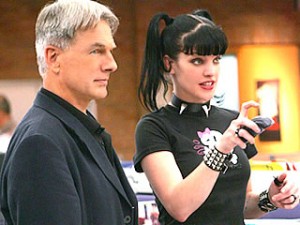Decades ago when you thought of a businessman, what were the first thoughts that popped into your head? If you thought business suits, that is not the case anymore!

Business professionals in formal business attire.
Over the past decade, some well-known companies have made casual Fridays into an everyday event where employees are allowed to choose their work attire, whether it is jeans and a t-shirt or a business suit. An astonishing 43% of workers who were interviewed stated that they wore casual business attire to work on a regular basis, which is up 32% since 2002 (Spitznagel). What does this mean for business executives and how are they responding?
Companies are hiring image consultants and fashion experts to teach their employees how to dress fashionably and appropriately. “American society has become so ridiculously casual,” says Clinton Kelly, co-host of the Learning Channel’s What Not to Wear.
On the hit CBS network show NCIS, a character named Abby works in a professional environment but always wears gothic-like clothes to work. She also consistently cracks cases and goes above and beyond what she is assigned. Is it appropriate for her to wear these outfits in such an office setting? Should young adults today have this option?
Recent college graduates are entering the workplace not knowing the difference between formal business attire, business casual or just casual. In the workforce today, 90% of employees do not know the difference or distinction between the different kinds of dress. By putting dress codes into employees’ hands, General Electric tries to be distinct in the different levels of dress allowed in the workplace. “Companies such as General Electric (GE) force them to make these distinctions every day by asking that they ‘use good, professional judgment,’ as GE puts it” (Spitznagel).
When it comes down to it, businessmen don power suits to “look the part” of a businessman, in addition to being an actual businessman. For businesswomen, the business attire options are much greater, from the female version of the power suit to skirts and sweater sets. Of course, this leaves room for many fashion faux pas at work and blurs the line of appropriate dress for women.
Social media guru Kris Ruby recently sat down with Ivanka Trump, daughter of real estate mogul Donald Trump, to discuss the topic of women in the workplace. Ruby poses the question, “How do you deal with people who may underestimate you because you are a young, attractive woman?” to which Ivanka replies, “I never mind when somebody underestimates me. It often means they are not well prepared.” She goes on to say, “If somebody has a meeting with Donald Trump, they will come in fully armed and fully prepared, whereas if they have a meeting with me, they are less likely to be prepared, which is an advantage for me. It is always better to know more than the person you are speaking with.”
Ivanka holds her own in the male-dominated corporate world and manages to dress both fashionably and appropriately. When asked about her style tips for women at work, the top three are context, modesty and femininity. Ivanka advises women to understand what is appropriate for their industry; an example she gives is dressing for the law firm versus dressing for an ad agency. She addresses the issue of women dressing a certain way in hope of being treated as equals. Ivanka says, “The instinct is to suppress our femininity, which is rooted in a concept that we should blend. But how you get there is not through shoulder-pads or pinstripes. You gain the respect of your colleagues. If you have their respect, they will not criticize you for dressing like a woman.”
The answer to the question of how one should dress in the workplace is different for everyone. In order to determine what is appropriate dress, employees should consider the workplace culture.
Still confused about what to wear? Take a look around the office. What is everyone else wearing? If all else fails, ask the boss. Knowing how to dress appropriately, comfortably, and fashionably is important in today’s working environment. The most important thing to keep in mind is that how you look says a lot; people will judge you based on your appearance. Also important is dressing to fit the culture of your clients. If you understand the circumstances of how business works, you understand that perception is reality.
Many people still wonder if it really matters what someone is wearing if they are doing their jobs. Ideally, no. In reality, yes, it does. Our advice? Dress for the job or position that you want. Like the old saying goes, “When in Rome… dress for success!”
Written by Adriana Mirra & Vicki Truong






 The first day the iPhone went on sale, the advertising campaign’s outcome proved strong with thousands of people from across the country waiting patiently for hours outside of Apple stores to be one of the first people to purchase this new piece of innovative technology. Since 2007, Apple has sold several million iPhones worldwide and has released new, upgraded versions as well. The 3GS iPhone came out in 2009 and this year, the iPhone 4G was released.
The first day the iPhone went on sale, the advertising campaign’s outcome proved strong with thousands of people from across the country waiting patiently for hours outside of Apple stores to be one of the first people to purchase this new piece of innovative technology. Since 2007, Apple has sold several million iPhones worldwide and has released new, upgraded versions as well. The 3GS iPhone came out in 2009 and this year, the iPhone 4G was released.